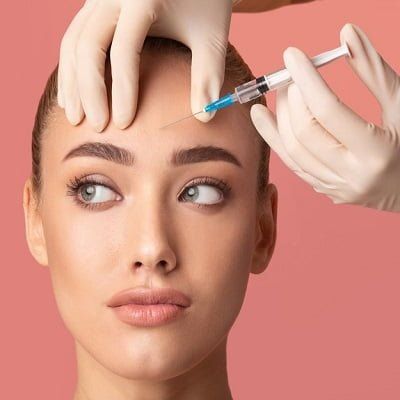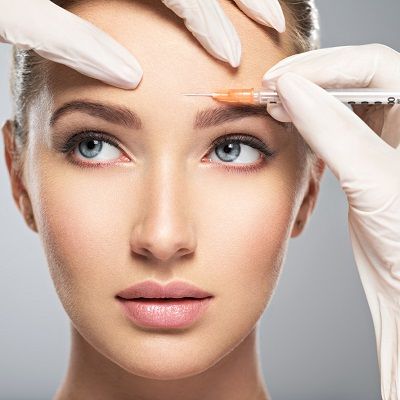Botox injections in Muscat, like in many other parts of the world, have evolved significantly since their initial use. Originally developed for cosmetic purposes, Botox injections Muscat has transcended its initial role as a wrinkle treatment and has found diverse applications in the medical field. This article delves into the fascinating journey of Botox, exploring its transformation from a cosmetic remedy to a multifaceted therapeutic tool.

Early Days: The Birth of Botox
Botox, short for Botulinum toxin, was first discovered in the late 19th century. It wasn’t until the late 20th century that its potential for medical and cosmetic applications became apparent. Initially used to treat muscle spasms and neurological disorders, Botox's ability to temporarily paralyze muscles made it a promising candidate for treating a variety of conditions.
From Muscle Spasms to Cosmetic Use
In the early 1990s, Botox gained attention for its effectiveness in treating strabismus (crossed eyes) and blepharospasm (involuntary blinking). It was during this period that researchers noticed the cosmetic potential of Botox, leading to its approval by the FDA for treating frown lines in 2002. This marked the beginning of Botox’s journey from a medical treatment to a popular cosmetic procedure.
Botox in Muscat: A Growing Trend
In Muscat, Botox injections have become increasingly popular, reflecting a global trend towards non-invasive cosmetic treatments. The rise in popularity can be attributed to several factors:
Enhanced Aesthetic Appeal
Patients in Muscat have embraced Botox for its ability to smooth out fine lines and wrinkles, particularly around the forehead, eyes, and mouth. The procedure offers a quick and minimally invasive solution for those seeking a youthful appearance without the need for surgery.
Medical Applications and Advancements
Beyond aesthetics, Botox has been recognized for its efficacy in treating various medical conditions. In Muscat, as in other parts of the world, Botox is increasingly used to address conditions such as chronic migraines, excessive sweating (hyperhidrosis), and even certain types of bladder disorders. The versatility of Botox has made it a valuable tool for both cosmetic and therapeutic purposes.
The Science Behind Botox: How It Works
Understanding the science behind Botox is crucial to appreciating its wide range of applications. Botox is derived from the bacterium Clostridium botulinum and works by blocking nerve signals to muscles. This temporary paralysis reduces muscle activity, which can help alleviate symptoms associated with various medical conditions and improve the appearance of wrinkles.
Mechanism of Action
When injected into specific muscles, Botox inhibits the release of acetylcholine, a neurotransmitter responsible for muscle contraction. This results in reduced muscle activity and can effectively treat conditions related to overactive muscles or nerves.
Safety and Efficacy
Botox injections are generally safe when administered by trained professionals. However, as with any medical treatment, potential side effects and risks should be considered. In Muscat, healthcare providers ensure that Botox treatments are performed with the highest standards of safety and efficacy.
Botox for Medical Conditions: Expanding Horizons
Over the years, Botox has proven to be a versatile therapeutic agent, extending its use beyond cosmetic enhancements. Several medical conditions benefit from Botox treatments:
Chronic Migraines
One of the notable medical uses of Botox is for the prevention of chronic migraines. Patients who experience frequent and debilitating headaches may find relief through Botox injections, which can reduce the frequency and severity of migraine attacks.
Hyperhidrosis
Botox is also effective in treating excessive sweating, known as hyperhidrosis. By blocking the nerve signals that stimulate sweat glands, Botox can help manage this condition and improve the quality of life for those affected.
Bladder Disorders
In cases of overactive bladder, Botox injections can help alleviate symptoms by relaxing the bladder muscles and reducing involuntary contractions. This application has provided significant relief for many patients struggling with urinary incontinence.
Innovations and Future Directions
The future of Botox looks promising, with ongoing research exploring new applications and improvements in treatment techniques. Some areas of focus include:
Enhanced Formulations
Researchers are working on developing more refined formulations of Botox that offer longer-lasting results and reduced side effects. These innovations aim to improve patient outcomes and expand the scope of Botox applications.
Combination Therapies
Combining Botox with other treatments, such as dermal fillers or laser therapies, is an area of growing interest. These combination therapies can address multiple aspects of aging and improve overall treatment results.
Conclusion: Botox’s Impact on Modern Medicine
The evolution of Botox from a wrinkle treatment to a multifaceted therapeutic tool is a testament to its versatility and effectiveness. In Muscat and around the world, Botox injections are now an integral part of both cosmetic and medical practices. As research continues to advance, the future of Botox holds exciting possibilities, promising even more innovative applications and enhanced patient outcomes.
